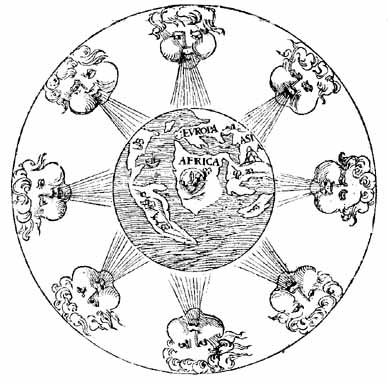Review of Katherine Watson: "Forensic Medicine in Western Society: A History" (New York, Routledge, 2010) by Lynne Curry for H-Law
Katherine D. Watson. Forensic Medicine in Western Society: A
History. New York Routledge, 2010. 224 pp. $105.00 (cloth), ISBN
978-0-415-44771-3; $30.95 (paper), ISBN 978-0-415-44772-0.
Reviewed by Lynne Curry (Eastern Illinois University)
Published on H-Law (October, 2011)
Commissioned by Christopher R. Waldrep
Medicine of the Forum
Katherine D. Watson has produced a superb synthetic work of medical and legal history that is sweeping in its narrative scope while at the same time attentive to manifold key differences in legal and
medical thought and practice, both among nations and over time.
Although the body of the work comes in at an efficient 150 pages,
Watson's writing is so lucid that readers will come away with a solid
foundational understanding of the definition, history, purpose, and
meaning of forensic medicine in Western society. Undoubtedly, many
will also find themselves eager to learn more.
Watson introduces the book by clearly laying out and defining her
terms. On the one hand, forensic medicine is "concerned with the
body, and with the effects on the body of acts of violence," which in
our own times distinguishes it from the closely related disciplines
of forensic science (with its many subspecialties, such as chemistry,
entomology, and ballistics) and criminology, a field originating in
nineteenth-century psychiatry (p. 4). On the other hand, forensic
medicine is not simply a branch of medicine because it grew from, was
shaped by, and remains integrally related to the needs and practices
of the law. As Watson makes clear, forensic medicine is inherently
interdisciplinary.
Chapter 1 traces the emergence of forensic medicine within the two
major legal systems in the West, the Continental (based in Roman and
canon law) and the Anglo-American (based on the English common law).
Differing methods of proof and rules of evidence meant that medical
evidence and testimony had differing purposes within in each system.
In the inquisitorial procedures of the Continental system, judges
conducted investigations of crimes based on written testimony. The
search for truth often led them to seek out the opinions of persons
not directly involved with the case, such as physicians. Thus the
legal system's need for medical expertise led to the establishment of
the formal discipline of forensic medicine housed in institutes and
academic departments, the first of which arose in German universities
in the seventeenth century. In the English accusatorial system, by
contrast, lay juries decided criminal cases. Testimony by medical
practitioners (physicians, surgeons, apothecaries, and midwives)
might or might not have been included in a proceeding at the
discretion of the presiding judge. Thus, a distinct, formal academic
discipline of forensic medicine did not initially develop in England,
but medical experts nevertheless actively participated in the legal
system.
Chapter 2 reaches back to the ancient world to illustrate the wide
range of critical duties performed by medical experts "wherever the
law and its officers recognized that medical practitioners could be
useful to the maintenance of an orderly society" (p. 43). In ancient
Rome, for example, physicians were called on to certify that an
illness would prevent an individual from fulfilling public office.
But throughout Western history, medical expertise has been especially
crucial in the realm of criminal justice, where the human body often
provides the main--and perhaps the only--source of evidence.
Chapter 3 focuses on the emergence of the modern medico-legal "expert witness" beginning in postrevolutionary France where the state actively supported the professionalization of police work and the standardization of criminal investigation, with toxicology emerging
as the first identifiable practice field in forensic medicine. The
toxicologist could "render the invisible visible," offering tangible
and invaluable evidence in a courtroom that a poisoning had occurred.
Watson argues that the increasing popularity expert witnesses in the
court room occurred in tandem with the increasing presence of
criminal lawyers, and before long forensic experts acted as "hired
guns" for one side in a case rather than as impartial scientific
advisers (p. 49). But the growing lucrativeness of forensic medicine
also engendered support for its maturation as a scientific field. The
world's first university institute of forensic medicine was founded
in 1815 in Vienna, and the field spread rapidly in the decades that
followed. Again, Watson tracks carefully how differing structures and
requirements of legal systems in Europe, the United Kingdom, and the
United States served to shape forensic medicine as a science
throughout the nineteenth century.
In the book's final three chapters, Watson offers relatively brief
but fascinating explorations of the complex relationships that exist
among law, medicine, and societal attitudes. Chapter 4 focuses on the
development of forensic psychiatry and the insanity defense. Chapter
5 examines the medicalization of deviance, particularly suicide,
infanticide, and sexual behavior. The concluding chapter highlights
twentieth-century developments, such as blood typing, DNA analysis,
and offender profiling. Readers may be slightly frustrated by the
author's brevity in these last three chapters, which seem less fully
developed than those constituting the first half of the book. Another
quibble is the slightly awkward insertion of case studies into the
text. While the case studies themselves are extremely interesting and
aptly illustrative, they are sectioned off in the physical layout of
the page in a way that I found somewhat disruptive; I wish they had
been more naturally integrated into the narrative. But these are,
indeed, very minor observations on my part. In fact, both of my
quibbles actually testify to the strengths of this book, which was
written so elegantly that I resented interruptions in my
concentration and structured so compellingly that I finished reading
wanting to know more.
Citation: Lynne Curry. Review of Watson, Katherine D., _Forensic
Medicine in Western Society: A History_. H-Law, H-Net Reviews.
October, 2011.
URL: https://www.h-net.org/reviews/showrev.php?id=33206

